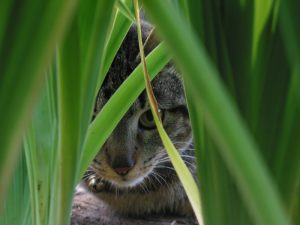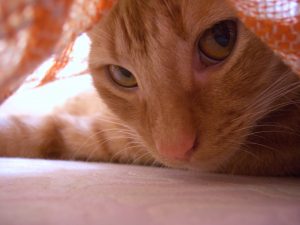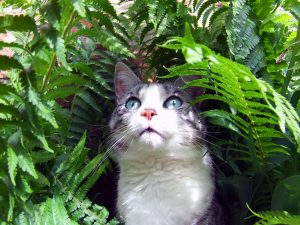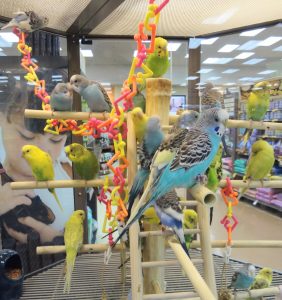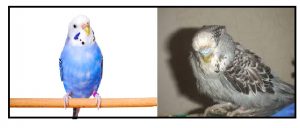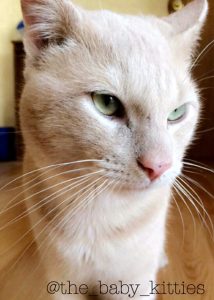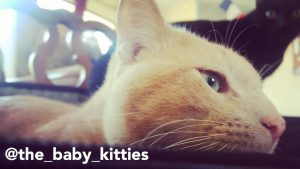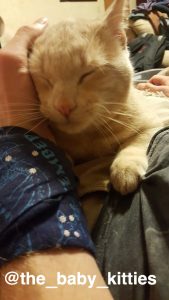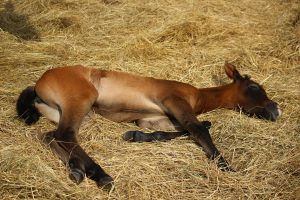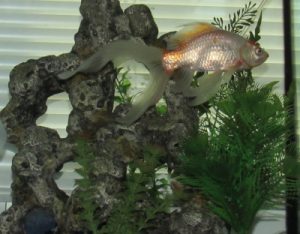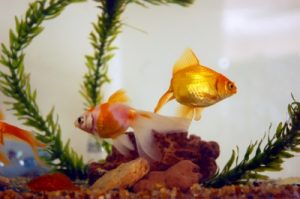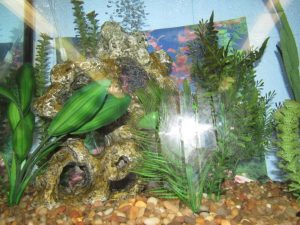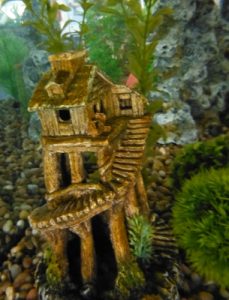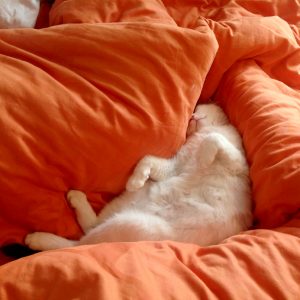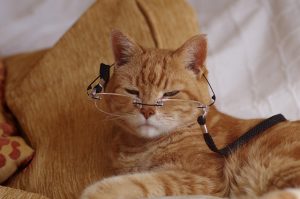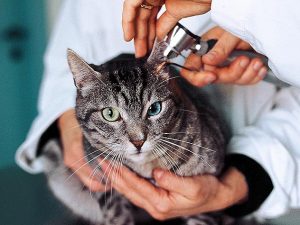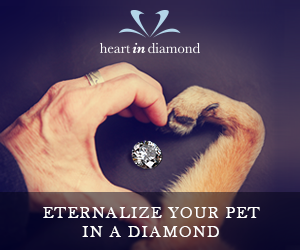Wild cats from tigers, leopards, and lions, to lynxes, bobcats, and pumas, are all ambush predators. They find a place to hide and wait for their prey to come into reach. Using their powerful hind legs, they spring into action and are literally on top of their prey before the little critter knows what happened.
Domestic cats, although far removed from their wild cousins, still retain that hiding and ambush trait. You can see it yourself whenever you play with your kitty, how they hunker down behind something such as a pillow, a table leg, or a blanket, and spring out to catch a hand, a play mouse, or a string. It’s the same mechanism going on that can be found in wild cats, and that’s what makes a cat so playful and so much fun to be around.
Hazardous Hiding Places
For every cute little safe sneak attack from under a blanket, there is also a place where a cat may hide that might not be quite so safe. Sure, cats love to find these little nooks and crannies where they think they are safe and ready for anything that comes along, but some of these places can be downright dangerous and life threatening. So, let’s take a look at some of the worst places your cat would love to hide in, and what you can do about it.
The Garage
This may not apply to you, but many people that have indoor garages make them an extension of their home. To that end, pets are allowed into the garage, and for a cat, this could be serious trouble. Cats are known for their love of warm places, so a vehicle that has just been parked inside might seem to be a perfect spot for a cat nap. Crawling up into the engine compartment may seem like the best possible spot in a cats judgment, but it’s the most dangerous place they could be. To make it worse, oils and chemicals can frequently spill out onto a garage floor, particularly antifreeze which is known to taste quite sweet. A quick lick of one of these “tasty treats” might send your cat to the vet for a prolonged stay, or worse, be terminal.
Washers and Dryers
This is another nice warm place where kitty would love to hide, but with so many moving parts, it can be a very nasty place. Thankfully, most washers and dryers are pretty well sealed up and they won’t allow a cat to have access inside. You’ll always have to guard against a cat actually crawling into the dryer proper, but a quick check before you close the door is a good practice to get into if you are a cat owner.
Under the Sink Cabinet
Here is another warm and dark place that a cat would love to explore and hide in. Unfortunately, this is the place where many household chemicals are kept, and it could be deadly for your cat if they decide to sample some of them. You can always make sure the cabinet door is solidly closed, and if the latch needs repair, get it done before any harm comes to your kitty.
Reclining Chair
If you have a cat but don’t know where they are before you recline on your favorite chair, you might want to find them before you do damage to Fluffy who could be hiding within the chair itself.
Boxes
Don’t throw out your boxes until you make sure kitty isn’t taking a snooze in one of them. Cats are famously fond of napping in any box they can find!
Open Windows or Balconies
If you have a two story home or live in a high-rise apartment, your cat may love to lounge in an open window or out on the balcony. Sure, cats are known for their superb balance, but a feather, an insect, a bird, or anything wafting on the wind, may trigger your cats instinct to go for it, and they could inadvertently leap right off a window ledge or a balcony deck.
By keeping these hazardous places inaccessible, you’ll be keeping your cat safe for a long, long time.
This being said, there are also some safe places your cat can hide!
Cat Tree
Cat trees are an excellent place for your cat to nap! Make sure you purchase (or make) one that is sturdy enough that it won’t topple over while your cat is taking their siesta, and make sure its safe for them to climb, scratch, and dig at!
Behind Curtains
Many cats love the feeling of the dark curtains on one side of their body, and the warm sun on the other. It makes them feel safe while still allowing them to watch what’s going on in the world around them. Just make sure you know right where your kitty is while your cleaning or vacuuming so you don’t scare them too badly.
Inside Closets (Sometimes)
If your cat hides in your closet, make sure you go through everything you store in their to ensure no danger will come to your kitty. If they’re hiding in your clothes closet, make sure there are no sharp hangars, no moth balls, and nothing they may destroy (for your own sanity). Your cat should NEVER go where you store chemicals or cleaning materials of any kind. If your cat manages to get in those chemicals, it could be life threatening. You may need to purchase some “child proof” locking mechanisms for these items if they manage to get in multiple times.
If you’re struggling to find a safe place for your cat to hide, make them one! You can easily find tutorials for cat tents, forts, towers, and houses online! Again, make sure the materials are things that you’re okay with being potentially torn up and make sure each individual material is safe for your cat.
Your cat WILL find a place to hide, so its up to you to make sure they’re safe and happy in their hiding spots. They’ll probably find their own places to hide, but you need to be the one who tells the cat if it’s safe or not. This will probably involve some amount of trial and error, but it is important to watch where your cat spends their time when they aren’t by your side.
Mary Nielsen founded FelineLiving.net and is a passionate cat lover, blogger, and part-time music teacher. She founded her blog to share her ups and downs of being a pet parent to a bunch of adorable cats. When she is not playing with them or teaching, you can find her experimenting in the kitchen.
Jessica Smith, Managing Editor, having been raised in a household full of dogs, guinea pigs, hamsters, and all things furry, Jessica’s love of animals has only grown over the years. She is currently volunteering for Safe Haven Animal Sanctuary in her free time when she isn’t out and about with her ridiculous pit bull mix, Annabel Lee, or taking care of her two goldfish, Carrot Cake and Winchester. She is also putting her literature degree to use by working as an editor for a local online magazine, Independent Noise. While she has no plans for the future, she knows that it will be filled with fur and fiction galore. You can e-mail Jessica at managerjessica@yourpetspace.info

